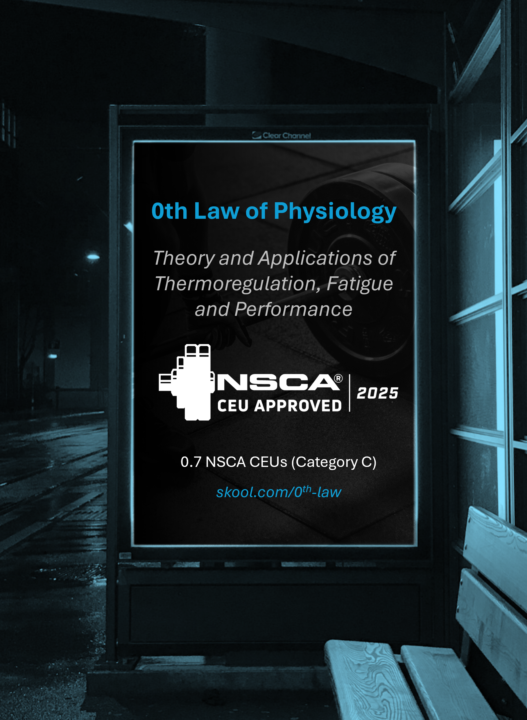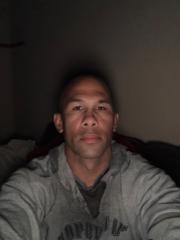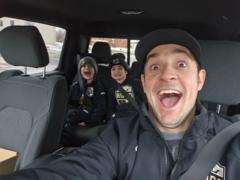Activity
Mon
Wed
Fri
Sun
Jan
Feb
Mar
Apr
May
Jun
Jul
Aug
Sep
Oct
Nov
Dec
What is this?
Less
More
Owned by Braeden
Free CEUs: Course on physiology, temperature, fatigue, cooling, and performance. *Approved for 0.7 NSCA/NASM + 3.5 CSCCa + 7.0 BOC/AFAA/ISSA CEUs.
We want you to earn cash by selling Kühler products. This community is dedicated to giving you the tools, resources, and training to help you succeed.
Memberships
14 contributions to 0th Law of Physiology (CEUs)
Introductions
One of the goals with this platform is create a collaborative learning experience where it is encouraged to ask, discuss, share, network, and contribute to personal and professional growth, individually and collectively. Please comment on this post with a short introduction about your background, professional experience, research interests, and anything else you'd like to share. I'll start off: I'm Braeden Ostepchuk, a former pro hockey player and mechanical engineer turned inventor and founder, obsessed with studying and building at the intersection of thermodynamics, physiology, and technology.

0 likes • 4d
@Dylan Brown welcome to the group - it's great to have your industrial experience which presents its own unique challenges and environments. Data centers and the industrial backbone of AI has been crazy to watch, more and more people and work needed behind the scenes to keep it working and people healthy. Off the top of my head, I do not have specific courses that come to mind, but do know that Medbridge is a great one-stop-shop for a large variety of courses.
Approved for 0.7 NSCA CEUs (Category C)
The National Strength and Conditioning Association approved 0.7 CEU(s) in category C for certified individuals who successfully complete this course. For those NSCA-certified professionals out there, take the linked assessment to get your free CEUs! 0th Law of Physiology - Assessment for NSCA CEUs And please share with your colleagues!

Headaches in heat...
Hey everyone I wanted to post here to see if I could get some feedback regarding heat and headaches. Ever since I was young kid 8 or 9 and played sports in the heat I would get headaches. The headaches were so bad in freshmen year of football I would have to come home and lay down with a fan on me, the lights off, and I couldn't eat so some time after practice. I don't workout and am not in the heat as much as a was back then but if I get to much heat/sun I will still get varying intensities of headaches. Obviously heat is at play but I am curious why it is causing headaches and if there are any other possible physiological things going on that can help prevent them. While if I do a hot sauna for too long I will get a headache, I have noticed in the past few years that I get slight headaches even if I am out in the sun to long or get too much sun. This can be a pretty short amount of time 15-20 minutes and I can feel a headache coming on and often times I don't feel like I am hot or over heating. Any feedback would be appreciated. Thanks
Training in the Heat? Acclimatization?
I have a quick comment/question. I train a lot of young athletes like hockey players and lacrosse players, as I was a former hockey player myself ...but it also run a boxing gym, as I cut into Boxing and boxed professionally for a few years. I keep the gym. Relatively warm, even though we have air conditioning. I want the athletes, especially the boxers, to get comfortable with being uncomfortable. When I was boxing professionally, I was training with sweatsuits on in the heat and obviously it was very uncomfortable, but I got really used to it. Is there a level of a acclimatization when training in the heat or cold weather? I got really used to training in the heat and could deal with it very, but I know there are a number of performance decreases as soon as the heat increases. Would love to know some thoughts.
2 likes • Sep 25
@Shawn Strickland great question and probably a common scenario given constraints during competition. A few thoughts: Cooling during training can help to increase the volume and quality of the training, leading to adaptations of improved strength/endurance/execution which could be transferred to the competition as a positive benefit. To play devil’s advocate, if you’re relying on cooling to achieve peak performance, and those same cooling methods are not available during competition, you will be limited by your physiological adaptation to the heat. Therefore, doing a complete heat acclimation protocol would be best so that the body is as adaptable to the heat as possible. There is a limit to physiological adaptation, so at some point, the constraints of personal physiological and the competition logistics (accessibility of cooling, breaks, conditions) will set the ceiling on optimization. I don’t think there is a big risk and the pros outweigh the cons, but you’re still going to want to prioritize acclimation if competition exposes players to heat.
Application of Palmar Cooling in cold environments?
Hello all! @Braeden Ostepchuk You're a hockey guy so I thought of this today as I finally got my Kuhler device and the notification for beer league hockey starting today: Will this device work on the bench in a cold ice rink? Does the ambient temperature in the mid to upper 30s and cold hands shut the palms down for the benefits? Ideally, I'd love to hold on to this thing between shifts. Would love to hear your thoughts!
0 likes • Sep 8
Hey @Bob Metcalfe - great question and something I've thought about extensively. Unfortunately, there are not yet any studies with palm cooling in a hockey environment, so my answer is mostly theoretical as an extension of other studies. Short answer, yes, it will work on a bench, even in the cold, but the extent of efficacy will land on a continuum due to a variety of factors. First, hockey players are highly susceptible to heat stress because of the high intensity activity that drives metabolic heat production and the insulation from the cold environment. There are multiple layers of insulating equipment, including the primary heat transfer portals (feet in skates, hands in gloves, and head in helmet). This greatly reduces opportunity for conductive, convective, or radiative heat transfer. Additionally, most sweat is trapped, so the evaporative cooling is also diminished. This creates the scenario where the body heats up quickly and ramps us cardiac output to the cutaneous skin, especially the hands. But to your point, as the metal reaches equilibrium with the cold environment, that is below the optimal temperature to avoid vasoconstriction of the hands. Keeping the device in its case to limit the cold exposure in between use may help, but after a few sessions of holding the device, your body heat will also transfer rapidly and warm up the device to a more appropriate temperature. Even just keeping the device wrapped in a towel to keep it from getting too cold could potentially help find the sweet spot. So there will likely be a tradeoff between competing forces: physiological drive to redirect blood to the extremities to dissipate heat and vasoconstrictive response to the cold. But, even if vasoconstriction leads to suboptimal heat transfer, there will still be some blood flow, hands will still be hot, and therefore some (likely high) degree of heat transfer. Conductive heat transfer to metal with a large temperature gradient will be orders of magnitude greater than pure convective heat transfer to the air, so even suboptimal would still be an improvement over no intervention.
1-10 of 14
@braeden-ostepchuk-8528
World's first thermal performance coach by Kühler | Founder, Athlete, Engineer, Inventor | 0th Law: Free CEUs (BOC/NSCA/CSCCa/NASM/AFAA/ISSA)
Active 17h ago
Joined Apr 16, 2025
Powered by




